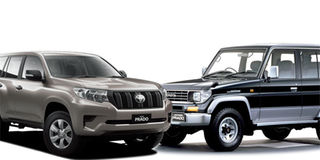Are modern cars more reliable than older ones?

The earlier Toyata Landcruiser Prado and the new one. internet Photos.
What you need to know:
One can understand why classic car enthusiasts believe that older cars are more reliable than modern models. Compared to newer cars, classic ones were much more simplistic in the design of their engines. However, the general consensus seems to be that modern cars do not breakdown as often as older ones.
Are modern cars more or less reliable than those manufactured decades ago? Many drivers remember the simplicity of cars in the 1980s and early 1990’s. A peek under the bonnet of a car built recently leaves most drivers at a loss even where to start with repairs. Surely the older cars with their simplicity must have been more reliable.
Newer cars are sometimes described as over equipped with accessories, a product of poor engineering and no longer a form of basic transportation. A malfunction of a minor car component should not disable a car for more than a few hours or even weeks. Perhaps this can be achieved by returning to the simpler cars of the past.
Well, we can all probably think of at least one car model or feature that probably was not thought out or tested thoroughly by the engineers.
Most technicians have wished car engineers would have to repair the cars designed by them. Then accessibility to many components on the car would become part of the design.
Safety
Nonetheless, overall, the engineers have designed major improvements into recent cars. For instance, passenger safety has never been better. Car bodies are designed to have a strong passenger compartment area while the rest of the body is deformed around them in an accident.
This design feature can sometimes be witnessed during professional car racing. Drivers are involved in horrifying crashes at high speeds but usually survive. Older cars can sometimes completely fall apart during a 50kph crash.
Features such as bonded in windshields, safety glass side windows, collapsible steering columns, air bags, anti-lock brakes and stronger seats, among others have all been designed to greatly increase safety.
Durability
Before, it was not unusual to require major engine repairs before the car had been driven even 80,000 kilometres. Today, improved materials and manufacturing procedures have increased engine reliability. Many cars are driven for more than 200,000 kilometres without major engine problems.
There are many examples of cars driven over 300,000 kilometres that have required only routine maintenance. These cars are pumped with technology that keeps monitoring the workings and either self-correct errors or jump into limp home mode. Failure of a newer car is usually a result of poor maintenance culture and simple ignorance of signs of failure that need attention not the car design.
It is not uncommon to find extremely high mileage cars in bonds that drive relatively closer to how they did when much newer.
As far as the argument that cars are equipped with too many options and “toys” and are no longer a form of basic transportation, well, there are still cars sold by most manufacturers that are “basic” transportation. However, cars nowadays have way too many toys that frustrate many drivers when they break.




